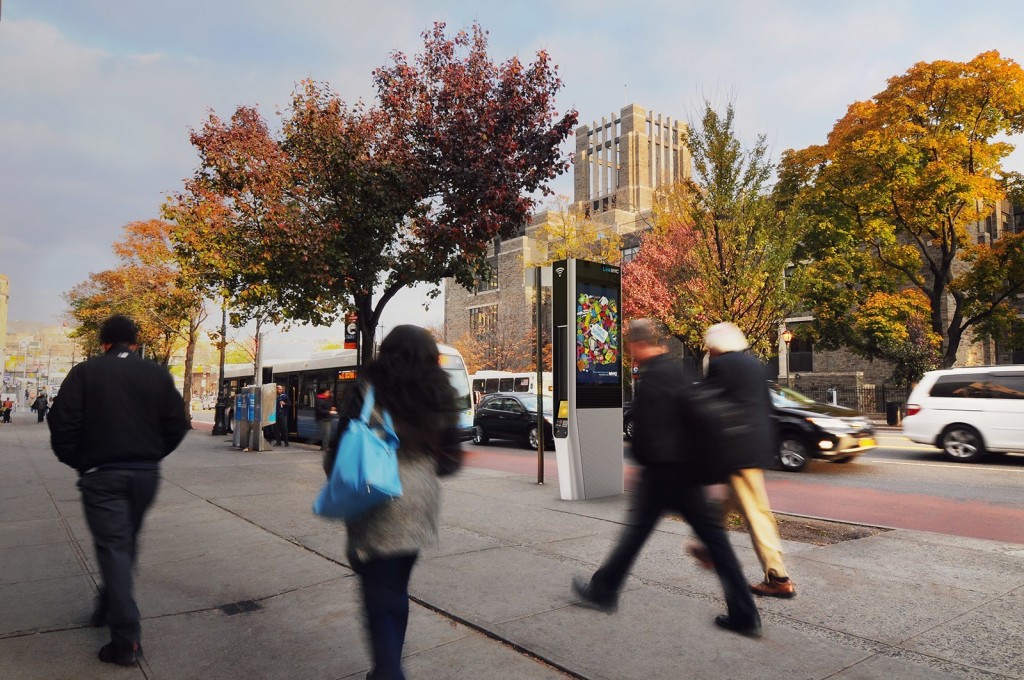
By Kevin Samson
Awareness continues to increase surrounding the health dangers of Electromagnetic Fields (EMFs) emanating from our daily gadgets, as well as from the rise of the Smart Grid. For example, a prominent neuroscientist went on record
in a lecture to the medical community itself where he exposed the many
health risks as well as an industry-wide attempt by telecom to cover up
the negative consequences. A world-renown biochemist is seeking to abolish WiFi in schools. And a British ER physician has made it her mission to educate people about what steps they can take to minimize exposure and damage to WiFi. A slew of peer-review scientific studies support the warnings of these experts.
So what happens when your entire city becomes one giant WiFi signal?
Major cities have been planning to do just that, and their plans are now
ready to become reality.
Telecom giant Virgin Media announced a pilot program in October to implement “discreet street furniture” and the “UK’s first Smart Pavement” in
Chesham, a city of 21,000 people. They stated that their plans were
ultimately far more ambitious, seeking “to build more networks like this
across the UK.”
But when New York City signs on to pervasive WiFi, we really should pay attention.
The city already has erected one 9-foot-tall structure that is an
indication of the rollout of 7,500 WiFi hot spots, which are slated to
go online early in 2016. It is part of the LinkNYC program
(“Faster Than a New York Minute,” har har) which proclaims to become
“the fastest and largest municipal WiFi network in the world.”
Even
if you don’t believe having a permanent WiFi signal radiating across
the city is a danger to your health, another aspect of pervasive WiFi
may be of concern: privacy and surveillance. Naturally, the city has
ensured people that the public network will be encrypted. However, there
also was an admission that information will be harvested for
advertising, albeit anonymized. It’s a familiar refrain from officials,
but one that has been proved many times over to be an empty assurance.
For example, it was a major news story when Seattle was discovered to have put in a secret WiFi mesh network
funded by Homeland Security. The discovery led the ACLU to document
the ways that residents and visitors could be spied upon while having
their movements fully tracked. Although most of the outrage was directed
at the secretive nature of the plan, the surveillance component is
clearly present as a justified concern. Should one feel comfortable that
NYC, which already has a massive surveillance apparatus known as the Ring of Steel, wouldn’t be mainlined into federal databases?
As a side note, there is also new WiFi tracking technology being developed that does not even need a connected device to home in on individuals or groups of people. You can read the chronicle of those developments HERE.
When one considers that more than 3 million people pass through Manhattan alone – daily –
the implications of pervasive WiFi are staggering. Moreover, the
LinkNYC plan is not a public one; it is being funded by private
corporations such as Qualcomm which will alleviate the $200 million
dollar cost of implementation. The city of New York will receive half of
all profits, however, making the city assuredly reluctant to properly
oversee citizen data protection. What was that about the merger of state
and corporate power? Oh, yeah: Fascism.
This little device delivers turnkey Internet privacy and security (Ad)
New York is not alone as a major U.S. city with such plans. According to The Associated Press:
Many U.S. cities strove to cover themselves in Wi-Fi in the early 2000s. But a number of the plans foundered as home access proliferated, usage and ad revenues disappointed and some Internet service providers complained the city networks were unfair competitors.
But some cities have recently recast and reinvigorated their efforts. Boston is working to expand a “Wicked Free WiFi” network with over 170 hot spots, and Los Angeles is encouraging private companies to provide free basic wireless to all homes and businesses, with outdoor coverage as a goal. (emphasis added)
But,
in reality, this is about more than having super-fast Internet to
download your favorite movie in seconds while you wait for the bus, or
to boost your business capabilities. It’s about the rise of fully
connected Smart Cities that are multi-use, imposed without debate, and
are very easily warped for less than noble purposes. It’s about merging the domestic “Internet of Things” with an industrial smart grid that is part of a technocracy endgame as defined by the UN’s Agenda 21. It is an all-encompassing agenda that has political support and the investment of every major tech company on the planet.
It is imperative that we learn and share what this overall agenda
entails, and reveal each piece of the superstructure that is being built
in front of us. Activist Post
No comments:
Post a Comment